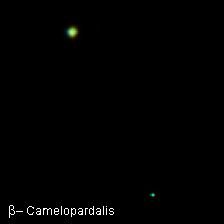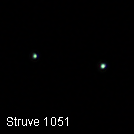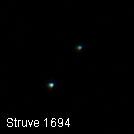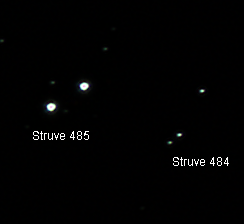

Camelopardalis is a very large constellation which extends from Auriga, Perseus and Lynx in the south almost to the north pole, squeezing between Draco and Polaris. It contains no bright stars and was believed to be empty by the ancient Greeks (one wonders about their light pollution!). It is a modern constellation but it is attributed to different authors by modern historians. Moore in his Atlas of the Universe attributes it to Helvelius in 1690, but various internet sources attribute it to Petrus Plancius in 1624.
Camelopardalis is the species name for the Giraffe and derives from the Roman name which means Camel-leopard as they saw it as a camel with the spots of a leopard. The word Giraffe comes from the Arabic name zarafa. It has no association with Greek or Roman mythology. It has been associated with the camel that carried Rebecca into Canaan to marry Isaac in the book of Genesis, but this seems fanciful as it is represented as a giraffe not a camel.
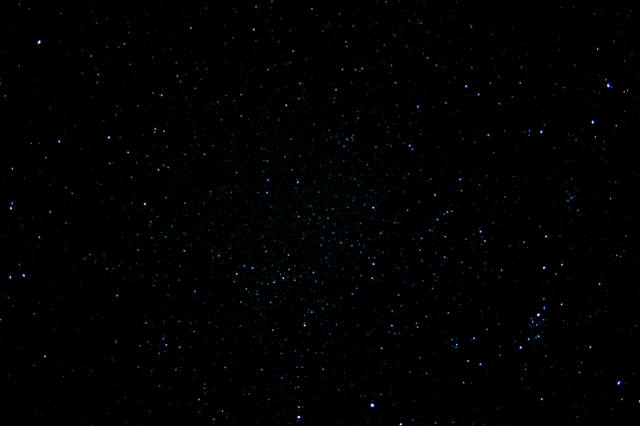
Although a large constellation, Camelopardalis contains no stars brighter than the 4th magnitude; β is the brightest at magnitude 4.1 with α at 4.3. The area is close to the galactic equator and is full of dim stars. As a consequence, I have found it quite difficult to identify the principal stars. I hope I have it right.
Despite Moore's comment in his book that there is little of interest in the constellation, it contains two objects from his Caldwell list—C5 (IC342) and C7 (NGC2403), both spiral galaxies. Collinder 434 (Cr434) is a very large open cluster covering about 2°, that is four times the size of the Moon. NGC 1569 is a small irregular galaxy which is only about 11 million light-years away. NGC 1502 is an open cluster, about 8 arc-minutes across and containing about 45 stars, and is at one end of Kemble's Cascade. NGC 1501 is a small planetary nebula.
The image was made with a Canon 1000D with its own 18-mm lens, an exposure of 30 seconds at f/3.5 and ISO 1600. It was enhanced by increasing the contrast, and gamma and a red, background glow removed in PhotoImpact.
There are of course many double stars in such a large constellation, but notable are β, the brightest star in the constellation, Struve 1051, Struve 1694, and Struve 484 and 485 which are in NGC 1502. These are all quite easy doubles, β having the greatest separation at 81 arc-sec. Struve 1051 is a multiple system of three or maybe four stars, the greatest separation being 46 arc-sec. Struve 1694 is much fainter and has a separation of 22 arc-sec.
